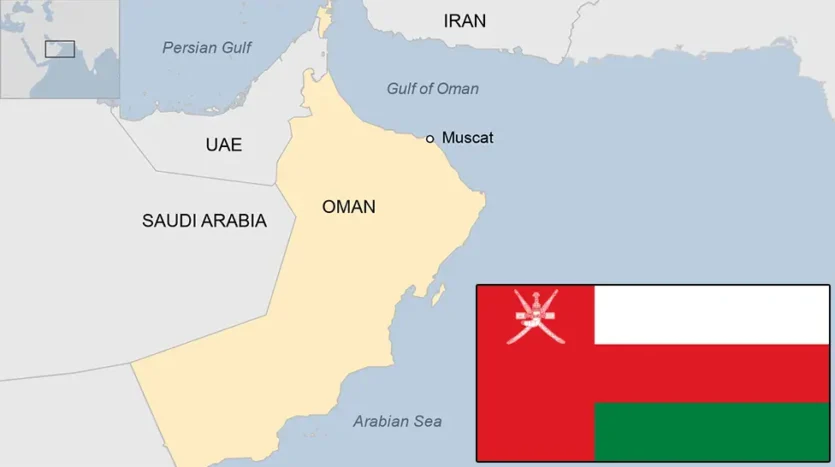Comprehensive Guide to Trade and Investment in Oman for Foreign Investors (2025)
Written by Lida Sayahi, CEO of Iskan Marketing and Investment
In recent years, the Sultanate of Oman has undergone significant transformation in its approach to foreign investment and economic diversification. As part of its Vision 2040 strategy, Oman is focusing on reducing its dependence on oil revenues, enhancing the private sector, and attracting international investors. This guide offers a detailed and practical overview of opportunities, challenges, and strategic recommendations for foreign investors considering entry into the Omani market.
Personal Experience in Business and Investment in Oman
Starting a business in Oman presents a dynamic environment with numerous opportunities. The Omani government has introduced reforms such as allowing 100% foreign ownership in several sectors and reducing commercial registration costs. These initiatives have created a more investor-friendly landscape. However, the rapid changes in regulations, particularly those tied to Omanization policies, require agility and careful planning.
Key Challenges for Foreign Companies
- Mandatory Employment of Omani Nationals
As of April 1, 2025, all companies with 100% foreign ownership must employ at least one Omani citizen within their first year of operation and register them with the social security system. Failure to comply may lead to penalties, including restrictions on access to the Omani business portal. - New Job Restrictions for Foreigners
Starting September 2024, over 30 new job categories, including system analysts, programmers, IT engineers, and quality control managers, have been restricted to Omanis. This restriction will continue to expand through 2027. These measures will require foreign companies to adapt their recruitment strategies. - Shortage of Skilled Omani Workforce
A major hurdle remains the limited availability of skilled Omani professionals in technical and managerial sectors. Despite government efforts to train Omani nationals, this gap persists in industries such as IT, engineering, and finance, making it challenging for companies to comply with Omanization policies while maintaining operational efficiency.
Section 1: Legal and Structural Framework for Foreign Investors
1.1 Company Structures and Registration
- Oman allows 100% foreign ownership in many sectors, especially under the Foreign Capital Investment Law.
- Main company structures include:
- Limited Liability Company (LLC)
- Branch of a foreign company
- Joint ventures
- Entities within Free Zones
- The Ministry of Commerce, Industry, and Investment Promotion (MoCIIP) oversees registration processes.
1.2 Mainland vs Free Zones
- Mainland: Subject to Omanization quotas and standard tax rules.
- Free Zones (e.g., Duqm, Sohar, Salalah): Offer tax holidays, 100% ownership, relaxed labor laws, and customs exemptions.
1.3 Real Estate Ownership
- Foreigners are generally restricted from owning land in Oman.
- Exceptions apply in Integrated Tourism Complexes (ITCs) such as Al Mouj, Muscat Hills, and Jebel Sifah.
- Long-term lease agreements (up to 99 years) are common.
Section 2: Omanization Policy and Labor Market Challenges
2.1 What is Omanization?
- A government policy aimed at increasing Omani nationals’ participation in the private sector.
- Mandatory Omanization percentages differ by sector.
- Penalties for non-compliance include fines, suspension of services, or non-renewal of licenses.
2.2 New Labor Restrictions (2024–2027)
- From April 2025, all 100% foreign-owned companies must employ at least one Omani within their first year.
- From September 2024, more than 30 new job categories restricted to Omani nationals, including IT, quality control, HR, and engineering roles.
- Gradual implementation expected through 2027.
2.3 Shortage of Skilled Omani Professionals
- Persistent gap in technical and managerial skills.
- High reliance on foreign expertise in sectors like construction, ICT, and finance.
Section 3: Taxation and Financial Environment
3.1 Key Tax Policies
- Corporate Income Tax: 15%
- VAT: 5% (applied across most sectors)
- Withholding Tax: 10% on specific payments to non-residents (e.g., royalties, interest)
3.2 Double Taxation Agreements
- Oman has limited Double Taxation Agreement (DTA) coverage, increasing tax burdens for foreign investors.
- Expanding DTA agreements can help reduce dual taxation risk.
3.3 Incentives for Investors
- Tax holidays (up to 30 years) in Free Zones
- Exemptions from customs duties
- Access to industrial land at subsidized rates
Section 4: Sector-Specific Investment Opportunities
4.1 Logistics and Ports
- Duqm Port, Sohar Port, and Salalah Port serve as regional gateways with world-class infrastructure.
4.2 Tourism and Hospitality
- Integrated tourism projects (ITCs) offer real estate and hospitality investment potential.
4.3 Renewable Energy and Green Hydrogen
- Oman is investing in solar, wind, and hydrogen projects to become a regional green energy hub.
4.4 Mining and Industrial Manufacturing
- Rich mineral resources: copper, gypsum, limestone, chromite
- Government seeks partners for downstream industrial projects
4.5 Agriculture and Food Security
- Opportunities in aquaculture, hydroponics, and food processing
4.6 ICT and Digital Transformation
- Support for data centers, e-commerce platforms, and fintech startups
Section 5: Risks and Practical Challenges
5.1 Bureaucratic Delays
- Inconsistent application of regulations
- Lengthy processing times despite ongoing digitalization efforts
5.2 Legal and Dispute Resolution Issues
- Preference for local legal systems in disputes
- Limited international arbitration culture
5.3 Cultural and Social Factors
- Importance of building long-term relationships
- Necessity of understanding local business etiquette and tribal influences in non-urban areas
Section 6: Entry Roadmap for Foreign Investors
- Market Research and Sector Selection
- Choose Business Structure and Registration Path
- Plan Omanization Strategy and HR Needs
- Secure Required Licenses and Tax IDs
- Establish Local Networks and Partnerships
- Comply with Reporting, Labor, and Tax Obligations
Section 7: Strategic Recommendations for the Omani Government
As Oman continues its journey toward economic diversification and labor market reforms under Vision 2040, it is imperative for the government to implement a set of policies that effectively balance foreign investment attraction with sustainable job creation for Omani nationals. Based on a deep understanding of the challenges faced by foreign investors, the following recommendations are proposed to optimize Oman’s investment environment while strengthening the country’s workforce.
1. Establish Sector-Specific Training Centers and Vocational Education Programs
Develop specialized technical and vocational education and training (TVET) centers in collaboration with private sector stakeholders. These centers should focus on emerging sectors such as renewable energy, ICT, logistics, healthcare, and finance. The programs should provide internationally recognized certifications and include internships or apprenticeship opportunities with local and international companies. Additionally, the government should consider offering tax incentives or subsidies for companies that sponsor Omani nationals for training.
Rationale: This approach will ensure the availability of skilled Omani labor to meet the growing demands of the private sector. It will also help reduce reliance on foreign labor while enhancing the overall competitiveness of Oman’s workforce.
2. Transition from Quota-Based Omanization to a Performance-Based Incentive Model
Shift from rigid Omanization quotas to a more flexible, performance-based system. Companies that exceed Omanization targets, actively invest in employee development, and demonstrate a low turnover of Omani staff should receive incentives such as tax reductions, faster business license processing, and priority in securing government contracts.
Rationale: Performance-based incentives have been shown to align companies’ hiring strategies with national goals more effectively than strict quotas, promoting both economic efficiency and social inclusion.
3. Create a Real-Time Labor Market Information System
Implement a dynamic labor market intelligence system that tracks the supply and demand for skills across various sectors and regions. This system should provide real-time data on employment trends, wage disparities, and skills shortages. The information gathered can guide future Omanization policies, workforce development initiatives, and immigration planning.
Rationale: A data-driven approach to labor market policy ensures that Omanization quotas and educational programs are responsive to actual labor market needs, reducing inefficiencies and skill mismatches.
4. Expand Bilateral Tax and Trade Agreements (DTAs and FTAs)
Accelerate negotiations and implementation of double taxation avoidance agreements (DTAAs) and free trade agreements (FTAs) with key global economies. Establish tax stability agreements with major investors to provide a more predictable fiscal environment for foreign companies.
Rationale: These agreements help reduce the burden of double taxation, foster trade and investment flows, and enhance Oman’s attractiveness as a destination for foreign investment.
5. Introduce Flexible Labor Mobility Programs
Introduce short-term work permits and labor exchange programs for foreign workers, especially in high-demand sectors such as technology, engineering, and healthcare. These programs would allow businesses to access specialized skills while providing time for local talent development.
Rationale: Temporary labor mobility programs provide an essential bridge to fill skill gaps in the short term while the local workforce undergoes training and development, helping prevent productivity losses in key industries.
6. Establish a Unified Investor Portal
Launch a centralized digital platform that integrates all business registration processes, including licensing, tax filings, labor permits, and Omanization tracking. The portal should include AI-driven tools for ease of navigation and multilingual support to ensure accessibility for international investors.
Rationale: Simplifying bureaucratic processes through digitalization reduces transaction costs, enhances transparency, and improves the overall ease of doing business in Oman.
7. Create a National Recognition Program for Omanization Champions
Introduce a national recognition program that publicly acknowledges companies excelling in Omanization. This program should reward companies that achieve significant milestones in local employment, training, and leadership promotion. Recognized companies could receive branding benefits, public endorsements, and enhanced eligibility for public sector contracts.
Rationale: Recognition programs leverage social incentives, such as prestige and public recognition, to motivate companies to outperform in their Omanization efforts, thus encouraging broader industry participation in national labor policies.
8. Promote Long-Term Economic and Labor Market Flexibility
To avoid excessive rigidity in Omanization policies, create a framework that allows for periodic adjustments based on real-time labor market data. This will ensure that businesses can adapt to changing market conditions without being constrained by outdated labor regulations.
Rationale: Periodic adjustments allow policies to stay relevant and flexible, addressing the evolving needs of both employers and employees while supporting a dynamic economy.
Conclusion
Oman offers promising opportunities across sectors with a stable, welcoming, and reform-driven investment environment. However, success requires a deep understanding of the local legal, cultural, and labor dynamics. With thoughtful planning, flexibility, and strong engagement with Omani institutions, foreign investors can play a significant role in the country’s long-term economic transformation.




